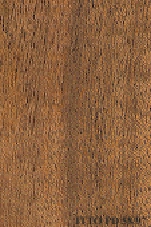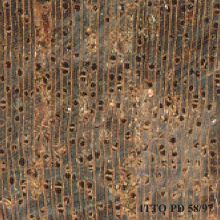
ANDIROBA (Carapa procera)
Trade Name
Andiroba
Scientific Name
Carapa procera DC.
Family
MELIACEAE
Common Names
Uganda crabwood; Toon-kor-doh; Sua-bise; Okoto; Munangu; Mukasa-kumbi; Monkey cola; Molonkoto; Mebukulo; Mbula-ndobi; Mbukuli; Kwaku-bise; Kundu; Krupia; Krapa; Kraa-bise; Ibbegogo; Engany; Engang; Ditondondo; Crabwood; Chu-nay-dor-kohn; Cedro macho; Carapa; Bukulo; Borowa; Asorowa; African crabwood; Mutongana (Uganda); Mujogo (Uganda); Agogo (Nigeria); Krupi (Ghana); Bete (Ghana); Dona (Côte d`Ivoire); Alla (Côte d`Ivoire); Toon-kor-dah (Liberia); Kowi (Sierra Leone); Gobi (Sierra Leone); Andiroba
Scientific Name Synonyms
Carapa microcarpa A. Chev.; Carapa gummiflua C. DC.; Carapa guineensis Sweet ex A. Juss.
Description Of The Tree
Botanical Description
The trees are reported to reach heights of 30 to 40 m, with diameters ranging from 50 to 80 cm. They develop straight and cylindrical boles, up to 15 m long. Lengths of 20 m are also possible.
Natural Habitat
Carapa procera is often a dominant species, which prefers humid areas. It can be found on hills or close to rivers.
Natural Distribution
Carapa procera has a wide growth range in tropical America and it is also found in West Africa, although the African trees do not reach the same dimensions as the American ones. In tropical America it is reported to occur from Costa Rica and Panama south
Wood Identification
Anatomic Description Of Wood
Occasionally tangential diameter of vessel lumina 200 micras or more. Red-colored deposits in heartwood vessels. Vessels per mm2 6 to 10 (medium). Intervessel pits small, 7 micras or less. Occasionally axial parenchyma absent or extremely rare, non visible with magnifying glass (8x). Occasionally axial parenchyma in marginal or in seemingly marginal bands. Occasionally paratracheal axial parenchyma scanty and/or vasicentric. Paratracheal axial 4 to 10 rays per mm (medium). Occasionally larger rays more than 4 seriate. Occasionally prismatic crystals in the ray cells. Heterogeneous rays and/or multiseriate heterogeneous rays. Septate fibers present.
-
 Wood Macro Photo Tangential Plane
Wood Macro Photo Tangential Plane
-
 Wood Micro Photo Of Transversal Section
Wood Micro Photo Of Transversal Section
Availability
Cites Status
Unrestricted
General Wood Description
Color
The sapwood is distinct, the heartwood is golden red brown in color.
COLOR INDEX (1=Black, 7=Light yellow,white)
4
Grain
The grain is usually straight, but sometimes it is reported to be slightly interlocked.
Texture
C. procera has fairly fine texture.
Natural Durability
C. procera is rated as poor to moderately resistant against decay and termites attack, but resistant against dry wood insects.
Natural durability index (1= Very high durability, 7=Vey low durability)
3
Resistance To Impregnation
It is reported to be untreatable either with oil or water based preservatives.
Wood Physical Properties
Basic Density or Specific Gravity (O.D. weight/vol. green) (g/cm³)
0.63
Air-dry Density (Weight and volume at 12%MC) (g/cm³)
0.70
Total shrinkage Tangential (Saturated to 0%MC) (%)
10.1
Total shrinkage Radial (Saturated to 0%MC) (%)
6.7
Dimensional stability ratio (Total Tangential Shrinkage %/Total Radial Shrinkage %)
1.5
Wood Chemical Properties
Wood Mechanical Properties
Bending Strength (MOR),12%MC (kgf/cm²)
1626
Stiffness (MOE) 12%MC (kgf/cm²)
136000
Compression parallel to fiber 12%MC (kgf/cm²)
635
Shear strength radial 12%MC (kgf/cm²)
116
Workability
Sawing
It is easy to cut, but it dulls the saw.
Rotary Veneer Cutting
This species is reported to be interesting for slicing and rotary peeling.
Sliced Veneer
This species is reported to be interesting for slicing and rotary peeling.
Blunting Effect
A very slight to slight dulling effect is reported for this species.
Machining
Machining of C. procera is reported to present some difficulties when interlocked grain is found.
Nailing
It has a good holding of nails, but splitting is reported on end grain.
Gluing
Gluing of this species is easy.
Finishing
Wood of this species is easy to finish.
REFERENCED USES
End Uses Summary
HOUSING GENERAL, flooring, fittings, FURNITURE AND CABINETS, cabinets, PLYWOOD AND VENEER
General Housing
- 10 - Silica in Timbers
Flooring
- 14 - Handbook of Hardwoods
Fittings
- 19 - Silica in Timbers
Furniture Cabinets
- 21 - Tropical timbers of the world. Part III-Southeast Asian and Oceanian Species.
Cabinet
- 24 - Empire Timbers
Panels, Veneers
- 25 - Directory of Timber Trade Malaysia
Please Provide Information To View Producer Information